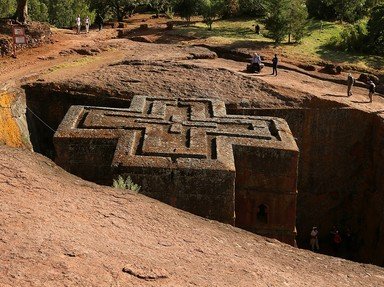Quiz Answer Key and Fun Facts
1. These amazing cave churches are found in caves on the towering cliffs of Lalibela.
2. What is the name of the river that runs through the site of the churches?
3. According to legend, how long did the construction of these churches take?
4. The churches are connected to each other by tunnels.
5. Lalibela, who reigned as Emperor Gebre Meskel from 1181 to 1221, is credited with the construction of this complex. What major religious city is it intended to suggest/imitate?
6. This painting can be seen on the wall of the shrine to St. Abbo in the Biete Qeddus Mercoreus. This saint is shown surrounded by lions and leopards because legend tells of him mastering these beasts. Which Biblical figure does he resemble in this?
7. Which of these churches, where this painting can be seen, is the oldest?
8. What significant religious item is kept in Biete Medhani Alem (House of the Saviour of the World)?
9. Biete Golgotha Mikael contains bas-relief sculptures of the twelve apostles.
10. Which of the churches is dedicated to the patron saint of Ethiopia?
Source: Author
looney_tunes
This quiz was reviewed by FunTrivia editor
stedman before going online.
Any errors found in FunTrivia content are routinely corrected through our feedback system.
